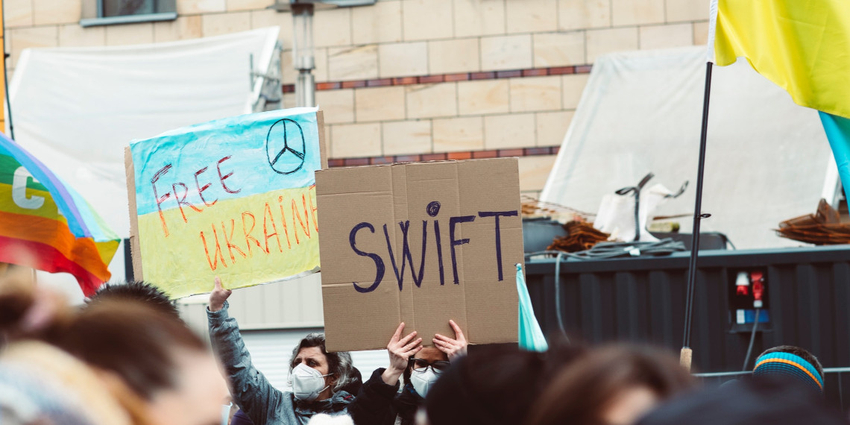The sixth sanction package of the European Union excluded the Russian Sberbank from SWIFT (“Society for Worldwide Interbank Financial Telecommunication”). However, the economic weaponization of global payment structures raises concerns by third parties about the future of these structures. A White Paper by the Leibniz Institute for Financial Research SAFE weighs the joint European and U.S. American decision’s advantages and disadvantages, including the need for policy reforms.
According to the paper, the weaponization of SWIFT creates problems concerning economic consequences, especially through increased costs for cross-border transactions. “The EU and the U.S. may even lose their central position in global financial infrastructures should they continue to use SWIFT as an economic weapon,” says SAFE Fellow Andreas Nölke, Professor of Political Science at Goethe University Frankfurt and author of the paper.
Europe’s challenge through SWIFT’s weaponization
However, without including the financial communications system, both parties would neglect an influential tool to sanction. In addition, the use of alternative systems, such as China’s “Cross-Border Interbank Payment System” (CIPS) or Russia’s System for Transfer of Financial Messages (SPFS) make it increasingly difficult to fight international money laundering, given SWIFT’s important role in this regard.
The paper states that a core challenge to the Western-dominated global payment infrastructures will stem from central bank digital currencies (CBDC). Currently, China is the global leader in the field and its strategy includes digital infrastructures centered on itself. Notably, the European decision to utilize SWIFT as an economic weapon has spurred Russia’s and China’s development efforts.
Russia’s and China’s alternative payment infrastructures in comparison
Since the annexation of Crimea in 2014, Russia has developed its own payment infrastructure: the SPFS. It models SWIFT to run simultaneously. Yet, the SPFS’s capacity is still very limited, and it is to work by itself only when a Russian bank is cut off from SWIFT.
Unlike SWIFT, China’s own CIPS works as a complete payment system. It incorporates clearing and settlement, thus being more independent from SWIFT and the US-based Clearing House Interbank Payment System (CHIPS). So far, the reach of CIPS – with 1,300 participating firms – is still limited but it performed a remarkable growth in 2021 by about 75 percent in terms of the transaction value, meaning that both Russian and Chinese efforts may backfire on the EU and the United States. Andreas Nölke adds that “this downside for Europe has to be considered when utilizing SWIFT as an economic weapon.”
Download the SAFE White Paper No. 89
Scientific Contact


